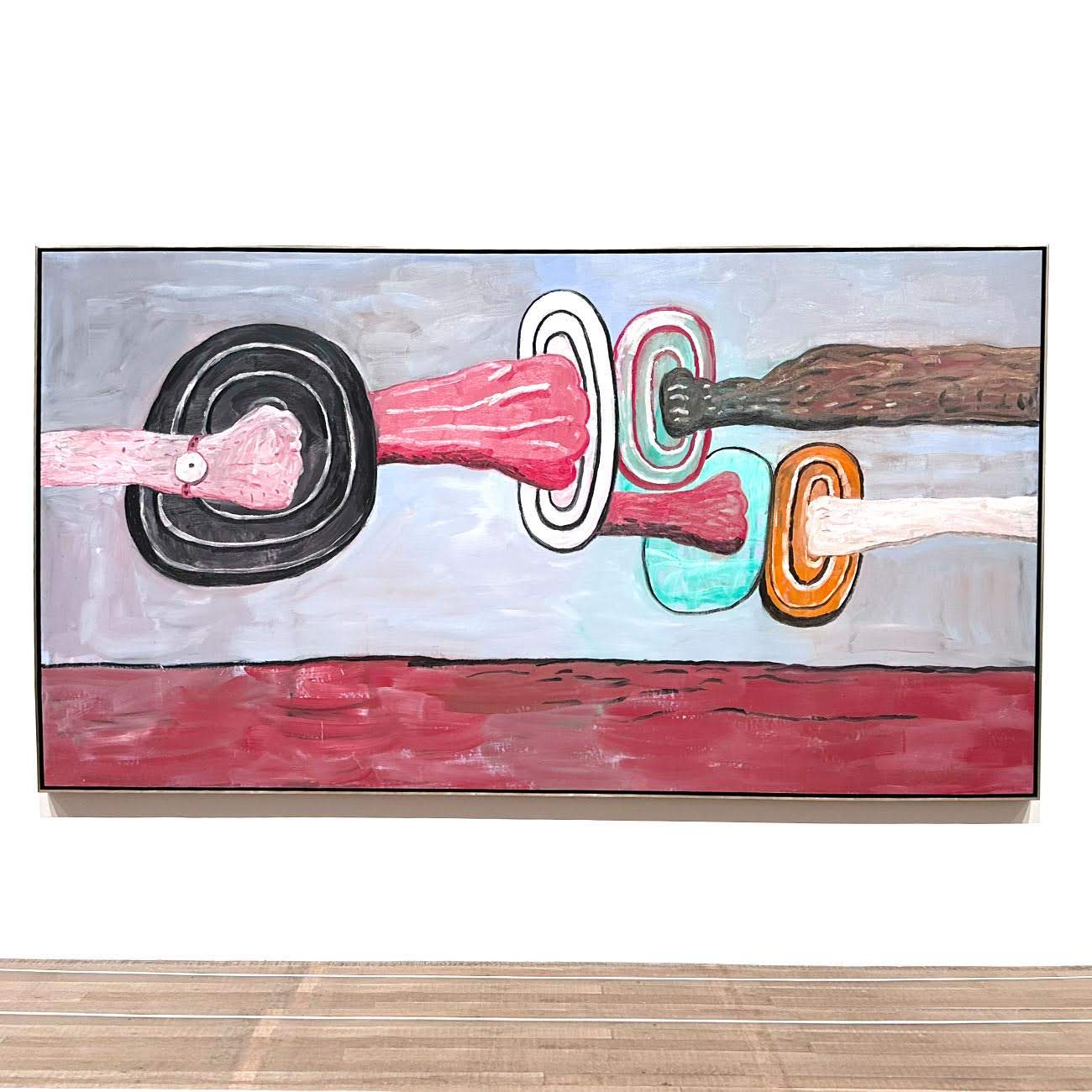PHILIP GUSTON: NOT YOUR USUAL SWEET PINK
When you’re in the studio painting, there are a lot of people in there with you – your teachers, friends, painters from history, critics … and one by one if you’re really painting, they walk out. And if you’re really painting YOU walk out.
Philip Guston
Philip Guston's use of color was never arbitrary; each hue is laden with meaning, a mechanism for exploring themes of violence, identity, and the mundane.
Guston's pinks, often juxtaposed against stark blacks and somber greys, create a visual dissonance that forces viewers to confront the unsettling realities depicted in his paintings. This deliberate use of color is how he challenges perceptions, making approachable the familiar, the strange and the disturbing.
Everything is possible, everything except dogma, of any kind. That's what it's about. Freedom. That's the only possession an artist has – freedom to do whatever you can imagine.
Philip Guston
Haunted by personal tragedies, the harrowing discovery of his father's suicide and premature loss of his brother, Philip Guston channeled his pain into art, transforming everyday visuals into a canvas awash with all shades of unique, Gustonian pink. This deliberate choice of palette, his ability to infuse the ordinary with layers of emotional complexity and depth, forged a unique artistic language – a color choice that saturates his work with a paradoxical blend of softness and intensity.
There are so many things to paint in the world – in the cities – so much to see. Does art need to represent this variety and contribute to its proliferation? Can art be that free? The difficulties begin when you understand what it is that the soul will not permit the hand to make.
Philip Guston
Shapes in Guston's work, particularly in his later periods, took on an almost totemic significance. Cartoonish yet laden with symbolism, these forms – ranging from hooded figures to everyday objects like shoes and cigarettes – are Guston's lexicon, the language with which he navigates and articulates the complexities of life. These shapes, with their exaggerated simplicity and ambiguous meanings, invite interpretation, engaging the viewer in a dialogue about the nature of evil, the absurdity of existence, and the search for authenticity.
The canvas is a court where the artist is prosecutor, defendant, jury and judge. Art without a trial disappears at a glance.
Philip Guston
Guston's ideas, the conceptual underpinnings of his work, were as varied as they were profound. He grappled with the human capacity for violence, racism, and the existential dilemmas of our modern world. His art is a mirror to society, reflecting flaws and virtues alike, a commentary on the human condition, both critical and compassionate.
The war, what was happening to America, the brutality of the world. What kind of man am I, sitting at home, reading magazines, going into a frustrated fury about everything—and then going into my studio to adjust a red to a blue.
Philip Guston
The recurring motif of the Klansman in Guston's later works serves as a poignant example of his ability to fuse color, shape, and idea into a powerful visual statement. These figures, rendered in his characteristic pinks, all shades of whites and greys, schematic eye-slits of the cone-shaped hoods, set against desolate landscapes, become symbols of the banality of evil, a critique of societal complacency in the face of injustice.
Well I think of my pictures as a kind of figuration. I think every good painter here in New York really paints a self-portrait.
Philip Guston
Guston's exploration of the mundane, of ordinary objects imbued with extraordinary significance, his masterful use of visual elements to convey complex ideas, his expressive brushstrokes become a reflection on identity, society, loss and the passage of time.
















